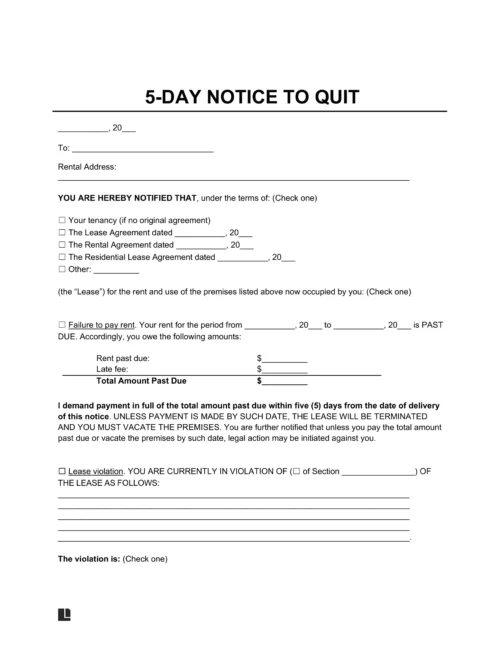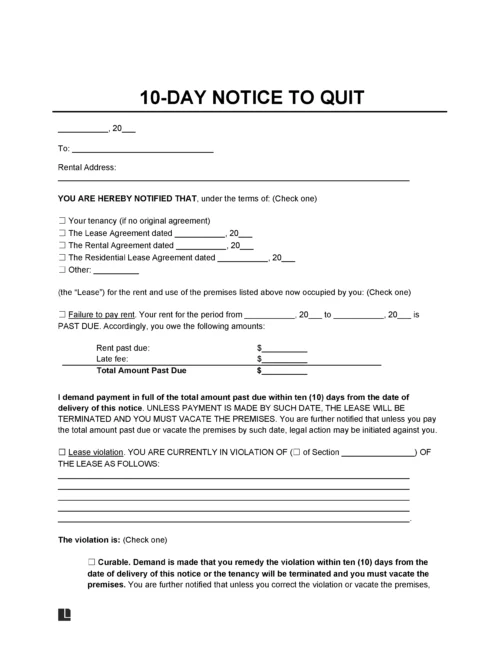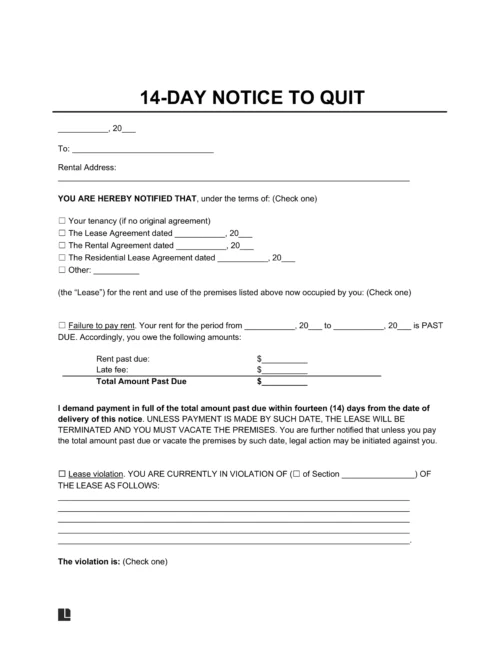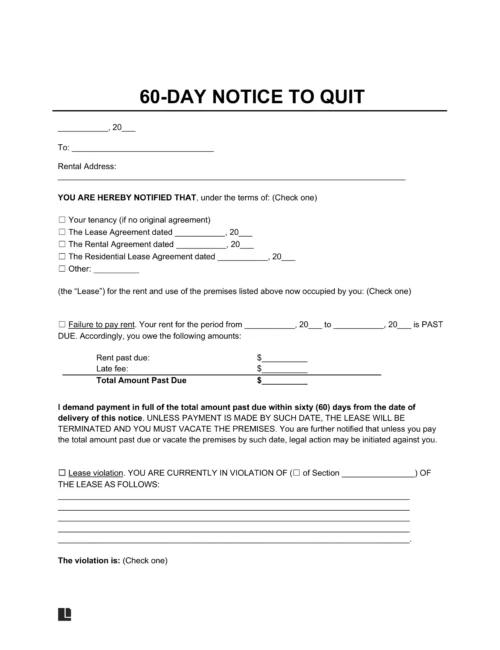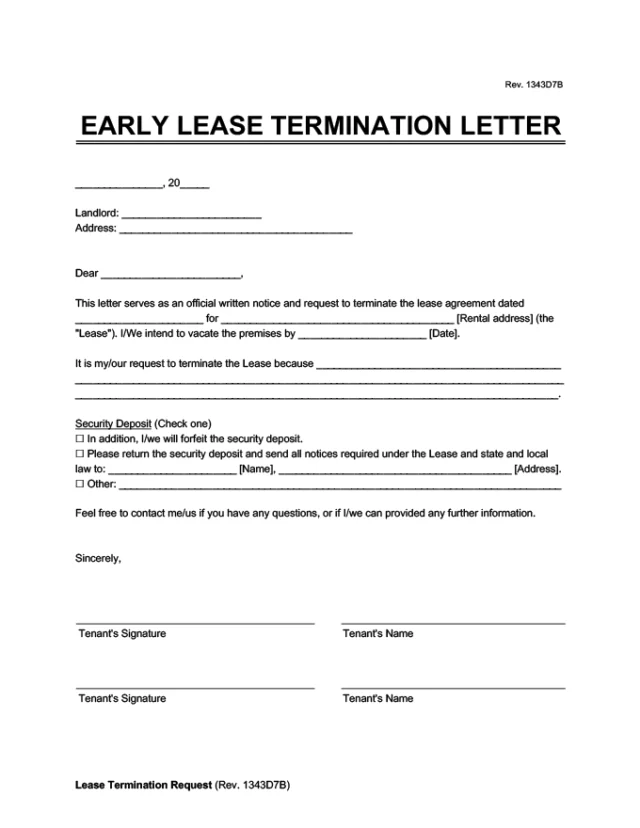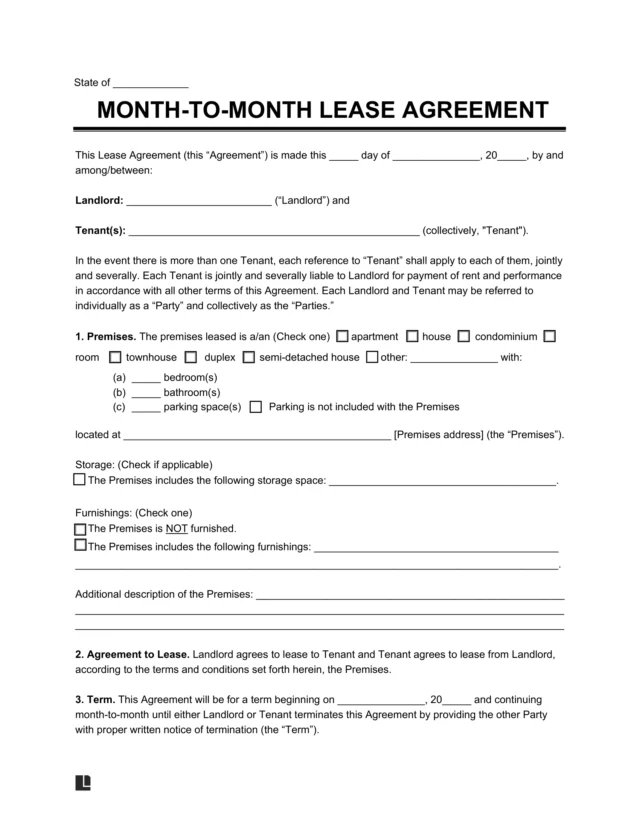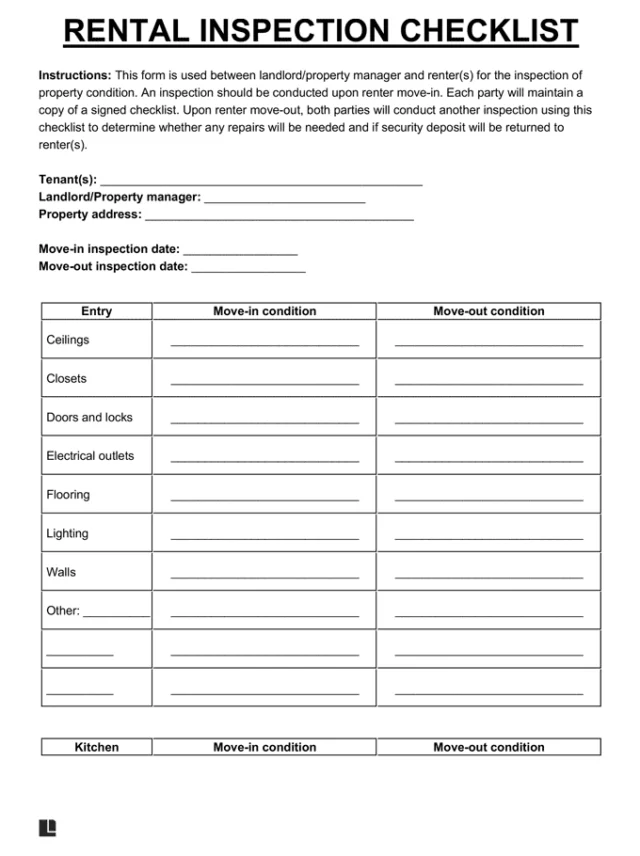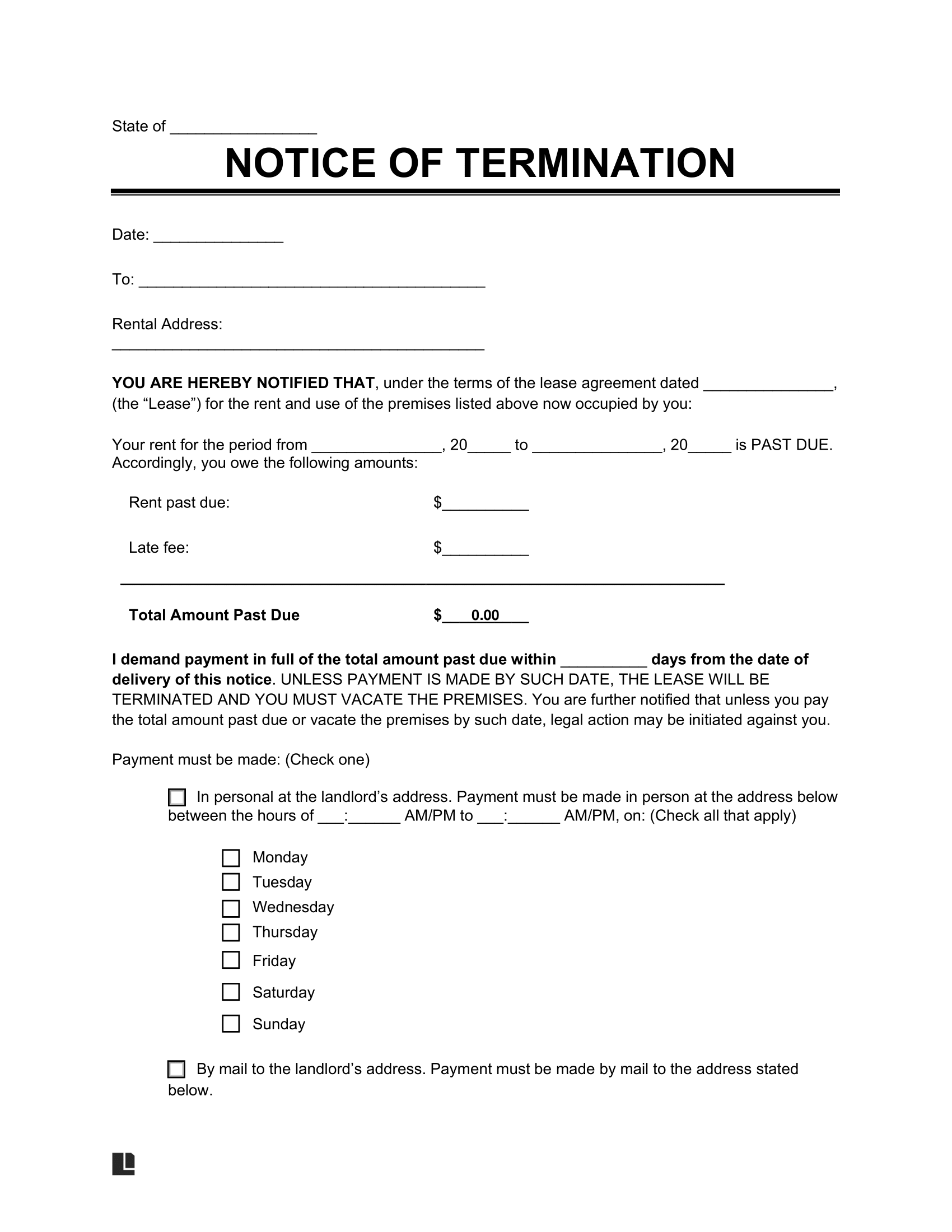Eviction Notice Forms – By State
Eviction laws vary by state—especially regarding notice periods, delivery methods, and tenant rights. Use a state-specific eviction notice to stay compliant and meet local legal requirements.
- Alabama
- Alaska
- Arizona
- Arkansas
- California
- Colorado
- Connecticut
- Delaware
- District of Columbia
- Florida
- Georgia
- Hawaii
- Idaho
- Illinois
- Indiana
- Iowa
- Kansas
- Kentucky
- Louisiana
- Maine
- Maryland
- Massachusetts
- Michigan
- Minnesota
- Mississippi
- Missouri
- Montana
- Nebraska
- Nevada
- New Hampshire
- New Jersey
- New Mexico
- New York
- North Carolina
- North Dakota
- Ohio
- Oklahoma
- Oregon
- Pennsylvania
- Rhode Island
- South Carolina
- South Dakota
- Tennessee
- Texas
- Utah
- Vermont
- Virginia
- Washington
- West Virginia
- Wisconsin
- Wyoming
Types of Eviction Notices
Different types of eviction notices help you communicate different reasons for eviction. Choose the right template for late rent, lease violations, illegal activity, or tenant relocation agreements.
This notice lets the tenant know they haven’t paid rent and gives them a set number of days to either pay the full amount or move out of the rental unit
Notice to Pay or Quit (Non-Payment)
Eviction Notices by Notice Period
Choose the right template based on the required number of days’ notice in your state.
What Is an Eviction Notice?
An eviction notice (or a notice to quit) is a formal document a landlord gives to a tenant to address a lease violation or request that they move out. It explains the issue, such as unpaid rent or property damage. If the problem is fixable, the notice gives the tenant a chance to correct it.
Eviction notices are often required before a landlord can file a legal eviction in court. If the tenant doesn’t leave on their own, a law enforcement officer may remove them after the court approves the eviction.
Our eviction notice template makes it easy to start the eviction process correctly. To stay compliant with local laws and timelines, choose a state-specific form based on your reason for eviction. If you’re looking for more voluntary move-out notices, you may want to use a notice to vacate instead.
Reasons to Send an Eviction Notice
Landlords cannot evict tenants for no reason if they’re on fixed-term leases. Below, you can explore some of the most common reasons to send an eviction notice:
- Not paying rent: The tenant has not paid rent on time, and the landlord has not received the full amount owed.
- Breaking the lease agreement: The tenant is not following the lease agreement terms, such as having an unauthorized pet or extra people living in the unit.
- Damaging the property: The tenant caused serious damage beyond normal wear and tear and didn’t fix it after being asked.
- Illegal activity: There is evidence of illegal actions at the property, such as drug use or other criminal behavior.
- Disturbing neighbors: The tenant is creating repeated noise, threats, or other problems that affect people living nearby.
- Refusing to leave after the lease ends: The tenant stays in the rental unit after the lease is over and doesn’t have permission to remain.
How to Write an Eviction Notice
Writing an eviction notice requires clarity and precision to ensure it’s legally valid. Each state has specific rules on what details must be included, such as the reason for eviction and the required notice period. By following the steps below, you can create an enforceable notice that protects your rights as a landlord.
Step 1 – Fill Out Initial Details
Fill in your information as the landlord, including your name, address, and phone number. This way, the tenant can communicate with you, either to get clarification on addressing the violation or to inform you that they’ll comply and move out.
Also, provide the tenant’s name and property address to clearly identify the intended recipient. If multiple tenants are on the lease, make sure you add all of them to avoid future problems. When you use our template, you can easily name multiple tenants.
Step 2 – Cite the Lease & Document the Violation
Note the date you and the tenant(s) entered the original agreement and name their violation. Our guided questionnaire offers pre-written options for you to choose from, which include:
- Failing to pay rent
- Violating the lease
- Remaining on the property
- Terminating a periodic tenancy
You can also reference the specific lease provision that the tenant broke for greater clarity.
Step 3 – Give a Correction Date & Reference State Laws
Clarify whether the violation is curable or incurable. If the breach can be cured, provide a deadline by which the tenant must fix the lease violation and ways they can correct it. You should also specify that if they’re unwilling or unable to correct the breach, they must move out within the given notice period.
Make sure the notice period matches your state’s legal requirements. Referencing the correct statutes strengthens your position if the eviction proceeds, showing that you followed proper procedures. Legal Templates’s form automatically inserts the applicable state laws and section numbers, saving you the trouble of finding them yourself.
| State | Notice Period for Non-Payment | Notice Period for Non-Compliance | Can the Tenant Pay to Avoid Eviction? (if the violation is curable) | Law |
|---|---|---|---|---|
| Alabama | 7 days | 7 days | Yes | AL Code § 35-9A-421 |
| Alaska | 7 days | 10 days | Yes | AK Stat § 34-3-160 and § 34-3-220 |
| Arizona | 5 days | 10 days | Yes | AZ Rev Stat § 33-1368 |
| Arkansas | 3 days | 14 days | No | AR Code § 18-60-304 and § 18-17-901 |
| California | 3 days | 3 days | Yes | CA Civ Pro Code § 1161 |
Step 4 – Sign the Notice
Sign the notice and specify the date you’re writing it so the established deadlines are clear. If needed, differentiate between the date you sign the notice and the date the tenant receives it.
Does an Eviction Notice Have to Be Notarized?
No, an eviction notice does not have to be notarized. It serves as a formal warning to the tenant, informing them they must correct a violation or move out. Your signature and the details provided will let the tenant know they must follow the notice’s terms.
Step 5 – Collect Proof of Service Information
In most states, you must provide proof of service to the tenant as part of moving forward with the eviction process. Proof of service is evidence that you submitted the notice and the tenant received it. Depending on your state’s rules, you may serve an eviction notice via one of the following methods:
- Personal delivery
- Substituted delivery (via someone living at the residence)
- Posted delivery
- Mailed delivery
- Service by a sheriff or authorized process server
When you use our template, you can choose whether you want to include proof of service. Even if your area’s laws don’t require it, it’s wise to provide it so you can prove when and how the tenant received the notice.
Plan Accordingly
Ensure you’re familiar with how long the eviction process takes so that you can anticipate the timeline.
Sample Eviction Notice
If you’re wondering what an eviction notice looks like, you can view a sample below. Customize this printable eviction notice template using our guided questionnaire, then download your completed notice in PDF or Word format.
Next Steps After Serving the Eviction Notice
Serving the notice is just the beginning. What happens next depends on your state’s laws, the type of violation, and how the tenant responds.
- Wait for the notice period to pass: Tenants must receive the full notice period to correct the issue or move out. Depending on the state and reason for eviction, this can range from a few days to over a month.
- Avoid “self-help” evictions: Landlords cannot change the locks, shut off utilities, or remove tenant belongings without a court order.
- File for formal eviction if needed: If the tenant doesn’t comply, you’ll likely need to file an eviction lawsuit (often called an “unlawful detainer”) in your local court. This is a separate legal process that may require a hearing.
- Understand tenant rights: Tenants have legal protections, including the right to contest the eviction in court. Following the correct legal process helps prevent delays or your case being dismissed.









